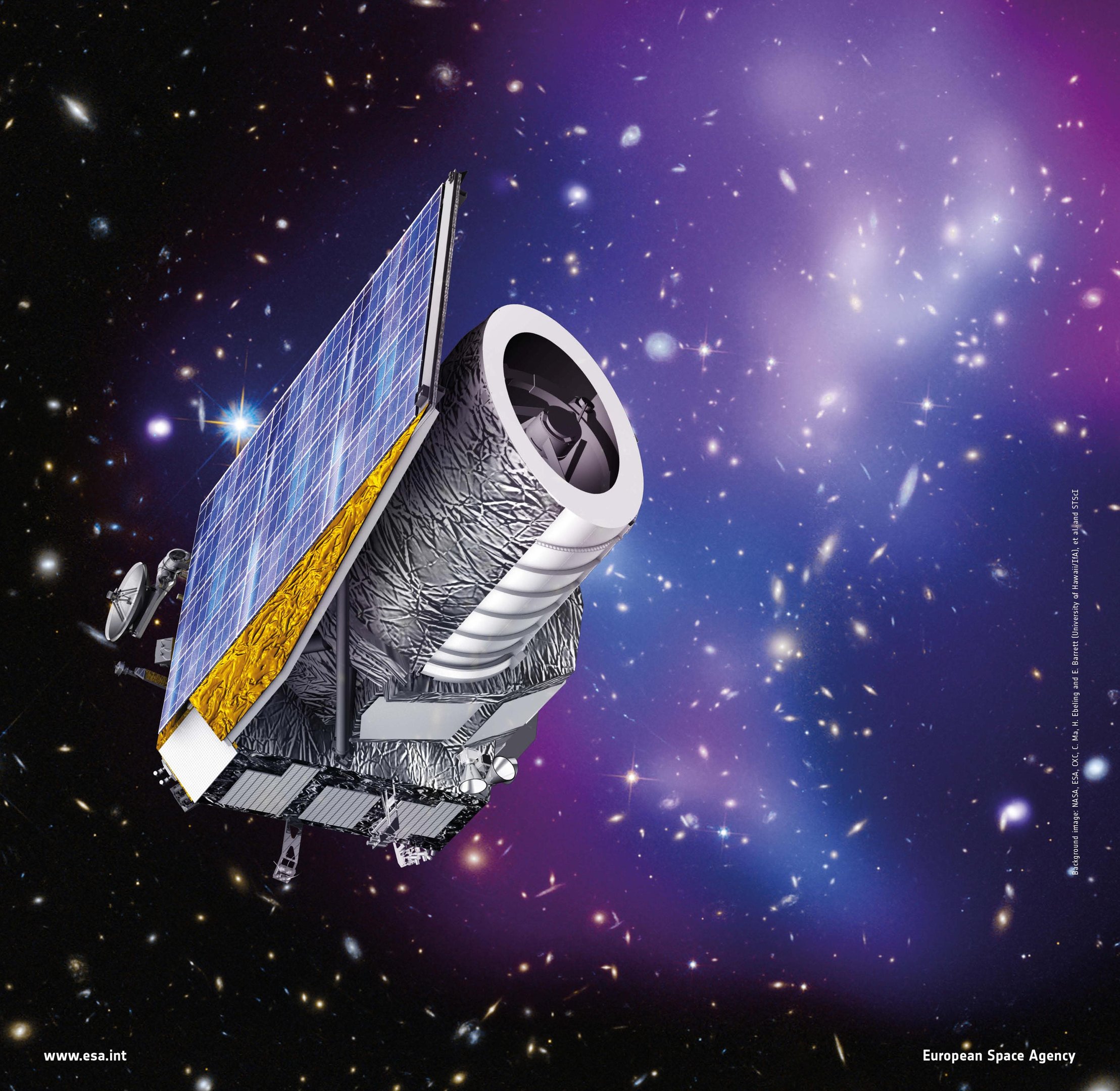TecMundo and #AstroMiniBR have brought together five of the week’s most interesting astronomical curiosities, produced by world collaborators. twitter profile sharing and spreading the knowledge of this oldest science with you. Check it out below!
#1: Launch of the Euclidean Space Telescope
Last Saturday, the 1st, the Euclidean space telescope, a mission of the European Space Agency (ESA) aimed at investigating the nature of dark energy and dark matter, two of the biggest mysteries in current cosmology, was launched.
Launched by SpaceX’s Falcon 9 rocket, the telescope will be placed in a sun-synchronous orbit around the Sun. This means that the telescope will follow an orbit in sync with Earth’s orbit around the Sun. maintain a fixed position with respect to the Sun during its mission.
With this stable orbit and sophisticated instruments, Euclid will map billions of galaxies in the sky, measuring their positions and properties, to better understand how dark energy affects the expansion of the Universe and how dark matter influences the formation of cosmic structures.
Euclid, along with James Webb, represents an important milestone in contemporary space exploration and in our journey towards answers about the composition and evolution of the Universe.
#2: The Midnight Sun!
The phenomenon known as the Midnight Sun is a fascinating sight that occurs near Earth’s North and South poles. On some days during the summer in these parts of the planet, the Sun never goes completely below the horizon, causing the Sun to remain constantly and brightly even at midnight.
This phenomenon is the result of the tilt of the Earth’s axis of rotation with respect to its orbital plane around the Sun of approximately 23.5 degrees. This is because the tilt of the Earth’s axis means that during the summer solstice (when the poles are tilted towards the Sun), the sun’s rays reach these regions tangentially.
This unique position causes the Sun to stay above the horizon for a long time: the closer to the pole, the longer the duration of the Midnight Sun. Extreme polar regions such as Norway, Alaska, Iceland, and parts of Antarctica can have weeks or even months of continuous sunlight.
#3: The beauty of the Fukang meteorite!
One of the rarest and most fascinating Space remnants that have reached human hands are the Fukang meteorite.! This beautiful space rock you see in the images above originated from an asteroid that disintegrated millions of years ago and crashed into the Fukang region of China in 2000.
Composed primarily of olivine and pyroxene, the Fukang meteorite exhibits a unique crystal structure that gives it a rather unusual aesthetic appearance compared to most meteorites. Besides its impressive appearance, the Fukang meteorite contains valuable information about the formation and evolution of the solar system, allowing scientists to explore and understand the processes that occurred in the early days of our planetary system. Thanks to him, it is possible to read the cosmic stories hidden behind its beauty even today!
#4: A Cosmic Hourglass
The image you see above is of the star L1527, A young star in the constellation Taurus, about 450 light-years from Earth. This star is of particular interest to astronomers as it is a star under construction surrounded by a dense hourglass-shaped gas cloud and cosmic dust.
L1527 belongs to the class of objects known as T Tauri stars, young, low-mass stars that are still in the process of gravitational contraction and accumulating material. Detailed studies of this star revealed the existence of a protoplanetary disk, a circular structure of gas and dust around which planets could form.
#5: How many planets are out there?
Modern estimates suggest that there is, on average, at least one planet for every star in the Universe. This value is based on a combination of observations and statistical studies of planetary systems in our own galaxy, the Milky Way, and discoveries of exoplanets around other stars.
Astronomers use various detection methods, such as planetary transit and radial velocity, to identify and characterize exoplanets. These surveys have revealed a wide variety of planets, from gas giants to small rocky planets.and stated that the formation of planets is a common phenomenon.
Based on these data, conservative estimates point to billions of planets in our galaxy alone, and given the vastness of the observable Universe, the total number of planets is likely to be much higher.
Source: Tec Mundo
I’m Blaine Morgan, an experienced journalist and writer with over 8 years of experience in the tech industry. My expertise lies in writing about technology news and trends, covering everything from cutting-edge gadgets to emerging software developments. I’ve written for several leading publications including Gadget Onus where I am an author.













